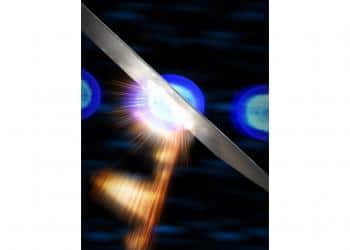Using leftover high-speed electrons from SLAC National Accelerator Laboratory’s Linac Coherent Light Source, researchers have successfully generated intense pulses of light in a largely untapped part of the electromagnetic spectrum – the terahertz gap.The researchers generated terahertz light pulses with field strengths comparable to the forces that hold atoms together in materials. The work was a collaborative effort between investigators in photon science and the LCLS at SLAC.The LCLS generates intense X-rays for research by accelerating electrons and sending them wiggling through magnets. Once their work is done, the still-speedy electrons are shunted off to a particle dump.The researchers sent the electrons, which are gathered into short bunches only 100 millionths of a billionth of a second long, through a thin metallic foil. The electrons in the metal responded by radiating in phase with each other, emitting short, coherent bursts of terahertz light.Beyond their potential for sensing and imaging, terahertz pulses create electric and magnetic fields that are capable of pushing atoms in specific directions. These fields could be used, for example, to push electrons or ions within a solar cell or electrochemical device in order to study the first stages of processes within them.Learn more from SLAC.
Terahertz Light Pulses Generated Through Thin Metallic Foil






